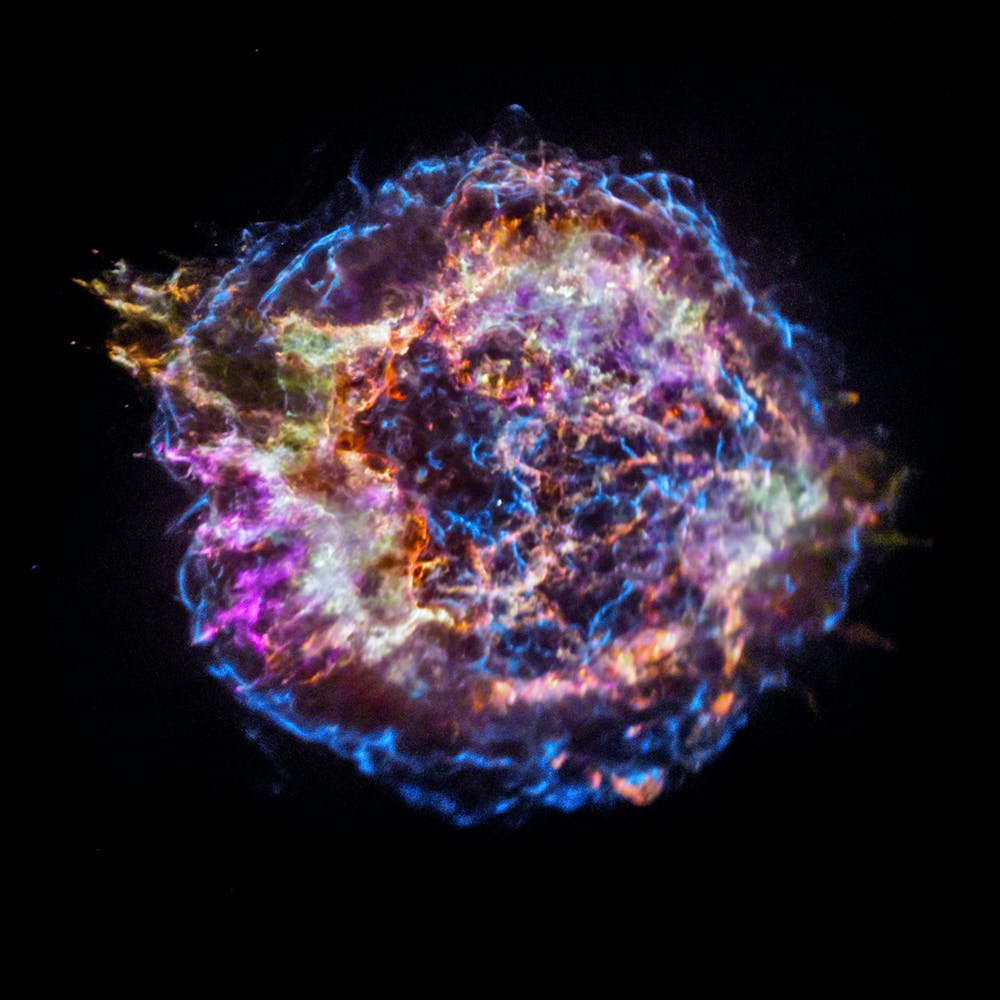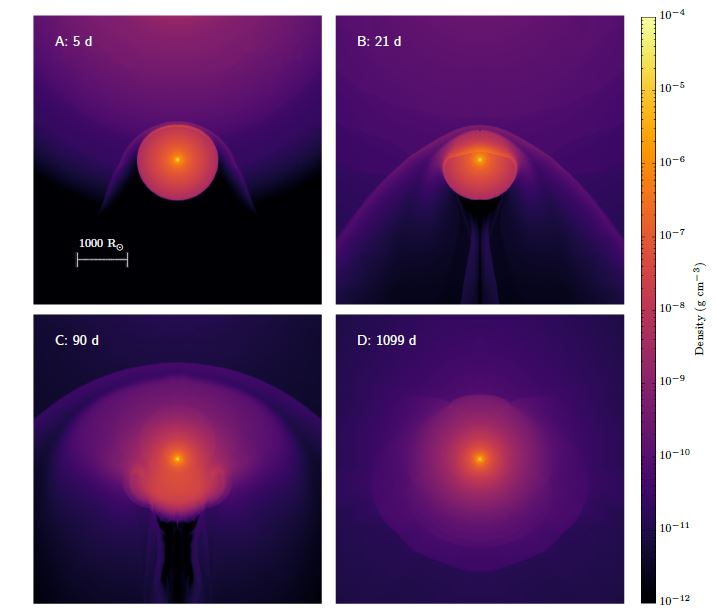 Image of the stripped-envelope supernova remnant, Cassiopeia A (Credit: NASA/CXC/SAO CC BY) Image of the stripped-envelope supernova remnant, Cassiopeia A (Credit: NASA/CXC/SAO CC BY) Massive stars end their lives with energetic explosions known as supernova explosions. ‘Stripped-envelope supernovae’ show weak or no traces of hydrogen in its ejecta, meaning that the star lost most or all of its hydrogen-rich outer layers before it exploded. Scientists hypothesise that these stars mostly originate in binary star systems, where one of the stars rips off the outer layers of the other star with its gravitational pull–many searches have been made to discover the remaining companion star following the stripped-envelope supernovae. In some searches, the companion star was successfully detected, but there are also numerous cases where the companion couldn’t be found, posing a serious problem for the binary hypothesis. The most famous case is called Cassiopeia A (Cas A): a stripped-envelope supernova remnant that is predicted to have a stellar companion, but nothing could be found in its explosive aftermath. In a recently published study led by the ARC Centre of Excellence for Gravitational Wave Discovery (OzGrav), researchers propose a new scenario for creating these ‘lonely’ stripped-envelope stars. OzGrav researcher and lead author of the study Dr Ryosuke Hirai explains: ‘In our scenario, the stripped-envelope star used to have a binary companion with a mass very similar to itself. Because the masses are similar, they have very similar lifetimes, meaning that the explosion of the first star will occur when the second star is close to death too’. In the last million years of their lives, massive stars are known to become red supergiants where their outer layers are very puffed up and unstable. So, if the first supernova of the binary star system hits the other massive star—while it‘s this puffy red supergiant—it can easily strip off the outer layers, making it a stripped-envelope star. The stars disrupt after the supernova, so the secondary star becomes a lonely stellar widow and will appear to be single by the time it explodes itself, a million years later. The OzGrav scientists performed hydrodynamical simulations of a supernova colliding with a red supergiant to investigate how much mass can be stripped off through this process. They found that if the two stars are close enough, the supernova can strip nearly 90% of the ‘envelope’—the outer layer—off the companion star. ‘This is enough for the second supernova of the binary system to become a stripped-envelope supernova, confirming that our proposed scenario is plausible,’ says Hirai. ‘Even if it’s not sufficiently close, it can still remove a large fraction of the outer layers which makes the already unstable envelope even more unstable, which can lead to other interesting phenomena like pulsations or eruptions.’ If OzGrav’s scenario occurs, the stripped-off envelope should be floating as a one-sided shell at about 30- 300 light years away from the second supernova site. Recent observations revealed that there is indeed a shell of material located at around 30-50 light years away from the famous Cas A. Hirai adds: ‘This may be indirect evidence that Cas A was originally created through our scenario, which explains why it does not have a binary companion star. Our simulations prove that our new scenario could be one of the most promising ways to explain the origin of one of the most famous supernova remnants, Cas A’. The OzGrav scientists also predict that this scenario has a much wider range of possible outcomes—for example, it can produce a similar number of ‘partially-stripped’ stars. In the future, it will be interesting to explore what happens to these partially-stripped stars and how they could be observed.
0 Comments
Leave a Reply. |
|
- Home
- About
-
Our People
- Chief Investigators
- Partner Investigators
- Associate Investigators
- Postdocs and Students >
- Professional & Outreach staff
- Governance Advisory Committee
- Scientific Advisory Committee
- Executive Committee
- Equity & Diversity Committee
- Early Career Researcher Committee
- Professional Development Committee
- Research Translation Committee
- OzGrav Alumni
- Research Themes
- Education and Outreach
- Events
- News/Media
- Contact Us
- Home
- About
-
Our People
- Chief Investigators
- Partner Investigators
- Associate Investigators
- Postdocs and Students >
- Professional & Outreach staff
- Governance Advisory Committee
- Scientific Advisory Committee
- Executive Committee
- Equity & Diversity Committee
- Early Career Researcher Committee
- Professional Development Committee
- Research Translation Committee
- OzGrav Alumni
- Research Themes
- Education and Outreach
- Events
- News/Media
- Contact Us


 RSS Feed
RSS Feed








